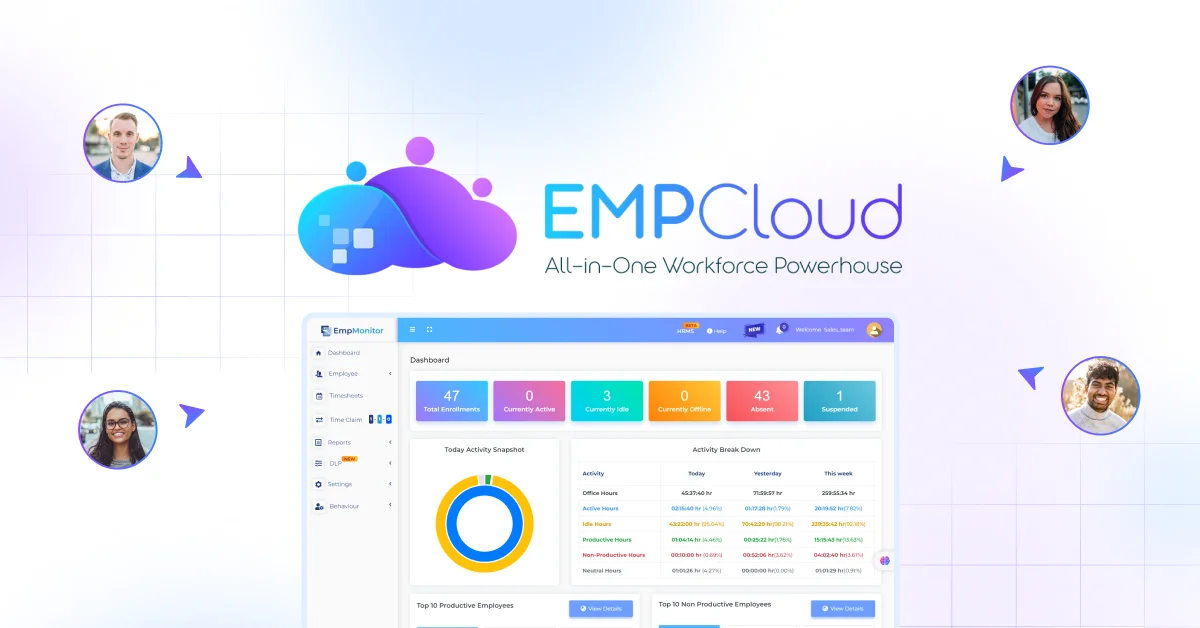
Workplaces across the world are changing faster than ever before as companies adopt smarter workforce models like a hybrid schedule . Employees are demanding more flexibility, teams are spread across locations, and business goals must be achieved through efficient coordination rather than physical presence alone.
This is where adopting a well-designed hybrid system becomes one of the most effective modern workforce strategies. Unlike traditional office routines or rigid fully remote models, this approach blends the best of both worlds. It gives employees the freedom to work remotely on certain days while bringing them on-site during collaborative phases.
The result is a workplace rhythm that boosts efficiency, improves morale, and helps organizations stay relevant in a rapidly transforming economy.
Listen To The Podcast Now!
The Growing Importance Of Flexibility In Today’s Workplace
The days when productivity was measured by hours spent at a desk are disappearing. Today, performance is measured by output, engagement, collaboration quality, and overall employee wellness. Modern human resource management strategies support this shift by encouraging adaptable work models. A hybrid schedule makes this possible by allowing employees to customize their work environments based on task type.
Creative or analytical work may happen more efficiently in quiet home settings, while team discussions, client calls, and brainstorming sessions often benefit from physical presence.
Modern organizations realize that flexibility translates into stronger loyalty. Employees appreciate the freedom to balance personal responsibilities without jeopardizing work commitments. With a hybrid schedule, people are less stressed by daily commutes, schedule constraints, or rigid workflows. This directly boosts productivity, creativity, and consistency.
Also Read:
Human Resource Management: A Strategic Guide
What Is The Meaning Of A Hybrid Work Schedule?
Before implementing it, leaders should understand the hybrid work schedule meaning clearly. It refers to an arrangement where employees divide their working hours between remote and on-site locations based on predefined structures. Some companies use fixed office days; others allow employees to choose. The central idea is balance.
Many employees ask: what is a hybrid schedule? It is an adaptable workplace design that prioritizes employee flexibility and collaborative efficiency. It doesn’t completely replace office culture nor eliminate home-based focus time. Instead, it blends both strategically.
Similarly, leaders often ask what is a hybrid work schedule? It is a structured approach to work that supports distributed productivity, synchronized teamwork, and optimized task management under a single system. When we ask what does hybrid schedule mean, the answer is simple: it means accessing workplace flexibility without losing organizational alignment.
Why Businesses Are Adopting Hybrid Scheduling Models?
For organizations, adopting a hybrid schedule isn’t only about employee comfort. It offers economic, strategic, and productivity advantages:
Less dependency on large office spaces:
Companies can save on real-estate costs, utility bills, and maintenance by reducing permanent workstation requirements and switching to hot-desking.
Better opportunities for global hiring:
Businesses can recruit talent from any region or country, gaining access to highly skilled professionals without relocation costs.
Improved employee retention:
Flexible work reduces burnout and increases job satisfaction, leading to fewer resignations and more long-term workforce stability.
Measurable productivity outcomes:
Employers can track output digitally through project management tools, ensuring work quality remains consistent whether employees are remote or on-site.
Reduced commute-related fatigue:
With fewer daily trips to the office, employees conserve energy, reduce stress, and arrive fresher on in-office days, improving focus and morale.
A hybrid schedule also improves diversity. Hiring no longer depends on city proximity, enabling organizations to welcome talent from different regions, cultures, and socioeconomic backgrounds. Remote employees can collaborate digitally and visit the office for critical planning, training, or teamwork phases.
How Hybrid Scheduling Works In Real Workplace Scenarios?
Imagine a team divided into research, design, sales, and support. Research professionals might require quiet environments for deep thinking, so remote days are ideal. Sales and support teams benefit from collaboration, so office days may align with meetings, presentations, and training sessions.
A hybrid schedule accommodates these varied needs without forcing everyone into a single routine by allowing workplace planning based on task priorities, not just physical presence. This prevents rigid structures that could otherwise lead to disengagement or even subtle forms of malicious compliance, where employees follow rules reluctantly without contributing real value.
Organizations commonly choose between different hybrid types:
- Fixed hybrid model – employees visit the office on specific days
Predetermined office days ensure alignment for brainstorming, project kickoffs, weekly reviews, and team updates. This reduces communication delays and keeps projects on track. - Flexible hybrid model – employees choose their own office days
Professionals decide when to come in depending on deadlines, personal productivity rhythms, or collaborative requirements, giving them autonomy without disrupting team workflow. - Task-based model – work location changes based on weekly responsibilities
When work involves creative collaboration, employees come on-site. When tasks require quiet concentration, remote work enhances output. This match between environment and task improves quality. - Role-based hybrid model – office attendance varies by department
Departments like sales, customer support, leadership, or operations may require more physical coordination, while design, writing, or development teams can remain remote most of the time.
A hybrid schedule functions best when:
- Goals and deadlines are clearly communicated,
- Team availability is visible through digital tools,
- Managers evaluate performance based on results instead of hours,
- Employees are trained to collaborate virtually.
When implemented thoughtfully, hybrid scheduling creates smooth teamwork, stronger engagement, and high productivity without unnecessary office trips.
Also Read:
Malicious Compliance: Understanding The Hidden Workplace Challenge
How Does Hybrid Scheduling Benefit Employees?
Hybrid scheduling is becoming a popular work model because it offers flexibility while improving overall employee experience. Here are some key benefits employees can enjoy:
Better health and wellness:
Flexible work environments help employees manage stress, maintain healthier routines, and avoid burnout.
Reduced travel hours:
Less commuting saves time, energy, and transportation costs, allowing employees to use that time more effectively.
Increased focus on deep work:
Remote days provide fewer office distractions, helping employees concentrate on tasks that require creativity and attention.
More availability for family commitments:
Hybrid work supports personal responsibilities, strengthening work-life balance and overall happiness.
Higher job satisfaction:
Flexibility and autonomy make employees feel valued, boosting morale and long-term engagement.
Reduced stress and higher motivation:
With more control over their schedules, employees feel calmer, more inspired, and ready to take initiative.
Enhanced creativity and proactiveness:
The mental space created by hybrid flexibility encourages innovation, independent thinking, and better performance.
Overall, hybrid scheduling helps employees work smarter, stay motivated, and maintain a healthy balance between personal and professional life.
How Does Hybrid Scheduling Create Value For Employers And Managers?
A strategic hybrid schedule doesn’t just support employees, it directly strengthens organizational performance, planning efficiency, and long-term competitiveness. By combining digital visibility with flexible attendance, employers can optimize resources, enhance productivity, and modernize their work culture.
Below are seven key advantages organizations can leverage from this model:
1. Reduced Operational and Facility Costs:
With fewer employees present in the office daily, organizations spend less on utilities, workspace, equipment, and maintenance. This helps businesses cut overhead expenses without compromising productivity.
Over time, physical infrastructure becomes easier to scale and manage efficiently. The savings can also be redirected into technology upgrades, training, or employee development programs.
2. Higher Productivity Through Task-Based Work Allocation:
Hybrid environments allow employees to choose workspaces suited to their responsibilities, improving focus and output. For example, complex tasks can be handled remotely, while collaborative sessions happen onsite.
This flexibility enables managers to plan workloads around performance patterns rather than fixed attendance. As a result, productivity remains consistent across diverse work settings.
3. Enhanced Talent Acquisition and Retention:
Flexibility is now one of the strongest factors candidates evaluate when accepting job offers. Organizations offering hybrid options appear more modern, supportive, and people-centric.
This strengthens employer branding and widens the talent pool beyond geographical boundaries. It also reduces turnover costs by improving employee satisfaction and long-term commitment.
4. Improved Collaboration Management During On-Site Days:
When employees come to the office for specific meetings, training, and brainstorming, collaboration becomes intentional rather than routine. Managers can schedule focused group activities instead of wasting valuable time on tasks that could be completed remotely.
This structured engagement enhances innovation, communication, and team alignment in more meaningful ways.
5. Better Data-Driven Visibility on Work Performance:
Hybrid models rely on digital tools for attendance, task tracking, and project insights, giving managers clearer visibility into how work progresses. This eliminates reliance on assumptions and helps leaders identify bottlenecks earlier.
Metrics such as turnaround time, activity levels, and task completion cycles support informed decision-making. Consistent data ensures accountability without micromanagement.
6. Wider Recruitment Reach and Workforce Diversity:
Hybrid scheduling removes location restrictions, allowing companies to hire talented professionals from different cities or regions. This strengthens diversity, introduces fresh perspectives, and closes skill gaps more efficiently.
It also reduces relocation costs and the pressure to maintain large office seating capacity. The result is a stronger, more inclusive workforce foundation.
How Does Technology Support Effective Hybrid Scheduling?
Technology bridges the gap between remote and on-site teams by enabling smoother communication and coordination. Companies that use collaboration platforms, attendance automation, performance dashboards, and project management systems consistently outperform others. This is exactly where modern platforms become essential.
As work spreads across multiple locations, organizations need systems that provide real-time clarity and transparency. During this transition, tools like EmpCloud become extremely valuable.
They centralize attendance, tasks, productivity data, access records, and approvals in one intelligent platform, making the hybrid schedule easier, more systematic, and far more efficient.
How Can Leaders Manage Hybrid Teams More Effectively?
Leaders play a critical role in ensuring hybrid work remains fair, productive, and collaborative. To achieve this, they must focus on:
- Equal participation: Every team member, remote or on-site, should have equal access to meetings, discussions, and growth opportunities.
- Transparent performance metrics: Clear expectations and measurable KPIs ensure employees know how their work will be evaluated.
- Fair recognition: Achievements should be acknowledged based on outcomes, not physical visibility in the office.
- Data-based decision-making: Leaders must rely on reliable insights rather than assumptions to drive strategies and resource allocation.
Here’s where productivity analytics matter. Many managers lack visibility into distributed teams, making it difficult to identify bottlenecks, work patterns, or hidden inefficiencies. Tools like EmpCloud provide performance insights without the need for micromanagement. This allows leaders to balance trust with accountability, enabling hybrid teams to operate smoothly across all departments.
How Does EmpCloud Support Hybrid Schedule Success?
As hybrid work becomes more common, organizations need reliable workforce management software to monitor attendance, productivity, compliance, and performance from anywhere. Managing distributed teams becomes easier when these insights are centralized and automated in real time.
EmpCloud brings vital hybrid-friendly capabilities under one intelligent dashboard, offering clarity, transparency, and automation where businesses need it most. It delivers a complete workforce management experience, covering every stage of the employee journey — from onboarding to exit.
Here’s how its core features contribute to a smarter hybrid work environment:
Seamless Onboarding:
EmpCloud simplifies the hiring and onboarding process through automated workflows. HR teams can create digital offer letters, manage document verification, and set up employee profiles instantly. This ensures new hires can start working faster — even remotely — with all the resources and access they need from day one.
Employee Tracking & Performance Monitoring:
With real-time tracking, managers can monitor attendance, activity levels, project progress, and productivity without micromanaging. The data-driven insights help evaluate performance fairly and identify bottlenecks or training needs, ensuring accountability across hybrid teams.
Training & Development Management:
EmpCloud includes tools to design, assign, and monitor training programs that align with organizational goals. Employees can access learning materials, participate in virtual sessions, and track their progress, promoting continuous growth and skill enhancement.
Attendance & Leave Management:
Whether employees are in-office or remote, EmpCloud records attendance automatically using biometric or face recognition systems. Integrated leave management allows employees to request and track time off easily, while HR can view and approve requests in real time — eliminating paperwork and confusion.
Payroll & Compensation Management:
The payroll module automates salary calculations, deductions, taxes, and reimbursements with precision. It integrates seamlessly with attendance and performance data, ensuring employees are paid accurately and on time, while reducing HR’s administrative workload.
HRMS (Human Resource Management System):
EmpCloud’s HRMS centralizes employee information, policies, performance records, and compliance documents. It streamlines HR operations, supports analytics-based decision-making, and maintains data transparency across departments.
Employee Exit Management:
When an employee leaves, EmpCloud automates the exit formalities — from clearance checklists to final settlements. It ensures compliance with company policies, manages asset recovery, and facilitates smooth communication, turning offboarding into a structured and hassle-free process.
With these capabilities, EmpCloud strengthens the hybrid schedule by connecting dispersed teams, automating attendance, simplifying approvals, and providing actionable insights. Leaders gain clarity while employees enjoy smoother workflows.
How Does Hybrid Scheduling Enhance The Overall Employee Experience?
In today’s evolving work culture, employees seek autonomy, flexibility, and meaningful appreciation. Hybrid scheduling supports these expectations by reducing unnecessary friction and giving individuals more control over how and where they work. This balanced approach acknowledges personal work styles and helps employees manage their time more effectively.
On remote days, employees can focus deeply on complex tasks without the interruptions commonly found in office environments. This quiet space improves concentration, boosts creativity, and supports better time management. In contrast, office days create opportunities for social connection, teamwork, spontaneous discussions, and relationship-building, elements that are often difficult to replicate virtually.
By combining structure with independence, hybrid models foster a sense of trust between employers and employees. When people feel trusted, they naturally become more proactive and responsible. This positive psychological impact leads to higher motivation, improved morale, and stronger long-term performance. As a result, employee experience becomes richer, healthier, and more fulfilling in a hybrid environment.
What Policies Help Organizations Support A Successful Hybrid Schedule?
For a seamless experience, policies should include:
- Clear office attendance expectations: Employees should know when in-person presence is required to avoid scheduling confusion.
- Remote work request guidelines: Defined rules help manage requests fairly and ensure equal access to flexibility.
- Performance measurement standards: Transparent KPIs prevent bias and allow employees to be evaluated based on outcomes, not visibility.
- Cybersecurity protocols: Secure data handling protects company information when employees work from different locations.
Clear boundaries and well-structured policies prevent the hybrid schedule from becoming chaotic and keep every team member aligned, informed, and accountable.
How Hybrid Work Improves Work-Life Balance?
Employees can:
- Attend personal commitments
- Schedule medical visits
- Reduce commute stress
- Maintain better mental health
Balanced professionals deliver their best. A hybrid schedule indirectly supports long-term retention.
Conclusion
As organizations continue to rethink workplace expectations, flexibility becomes a strategic advantage rather than a perk. A thoughtfully designed hybrid schedule empowers employees to perform efficiently, collaborate intentionally, and maintain personal balance.
Employers benefit from reduced overhead, improved analytics, and expanded hiring possibilities. When paired with tools that automate attendance, track productivity, streamline approvals, and provide real-time reporting, like EmpCloud, hybrid scheduling becomes more than operational convenience; it becomes a competitive driver.
The modern future of work isn’t about choosing remote or office. It’s about designing a smart balance. A hybrid schedule enables that balance, helping companies grow stronger, faster, and more sustainably in an ever-evolving digital landscape.
FAQs
Q1: Does a hybrid schedule negatively affect long-term employee productivity?
No. A hybrid schedule often improves productivity by allowing employees to work in environments suited to their tasks. Reduced commute fatigue and fewer daily distractions help them maintain consistent focus. Structured planning ensures performance remains stable over time.
Q2: Can a hybrid schedule harm communication and team bonding?
It doesn’t have to Office days can be strategically used for meetings, collaboration, and culture-building activities. Remote days focus on deep work, while digital tools keep everyone connected. When planned intentionally, teamwork actually becomes more efficient.
Q3: Is a hybrid schedule practical for employees who work in the field?
Yes. Field employees can be managed through real-time dashboards, location tracking, and digital task assignment. These tools provide managers with clear visibility and accountability. This ensures smooth operations without requiring constant office visits.









